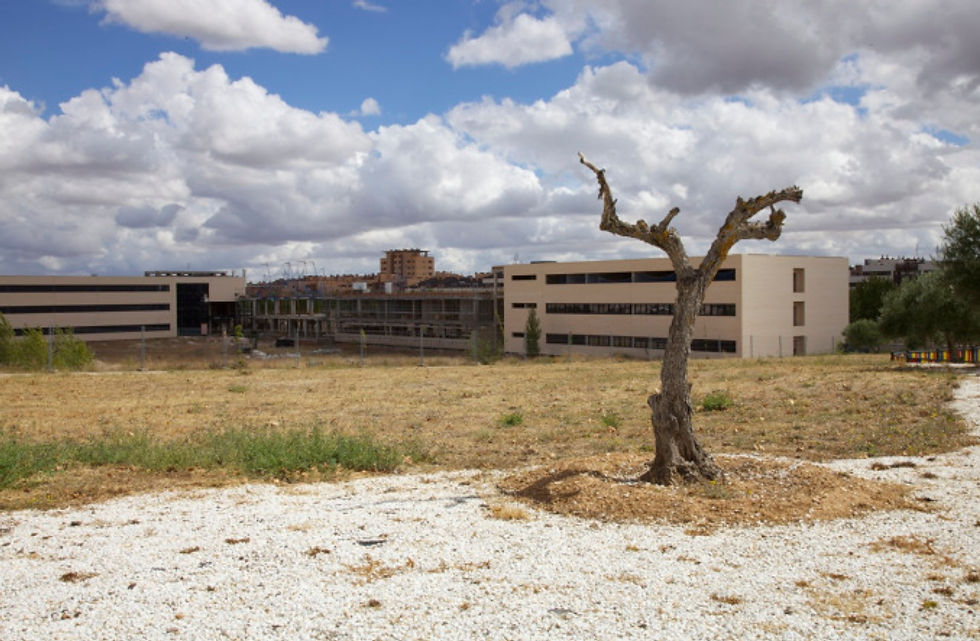
It was the American artist Robert Smithson who, in 1967, first coined the phrase ‘ruins in reverse’ when describing some of the strange forms he encountered in the post-industrial landscape around his home town of Passaic in New Jersey. His first ruin in reverse was an abandoned highway – a ‘zero panorama’ that contained within it ‘the memory-traces of an abandoned set of futures.’ Of course, that abandoned construction project was not a new phenomenon – one can imagine countless structures in history never reaching a state of completion; yet, there was something unprecedented in Smithson’s attribution of the term ‘ruin’ to this not-yet-built environment.
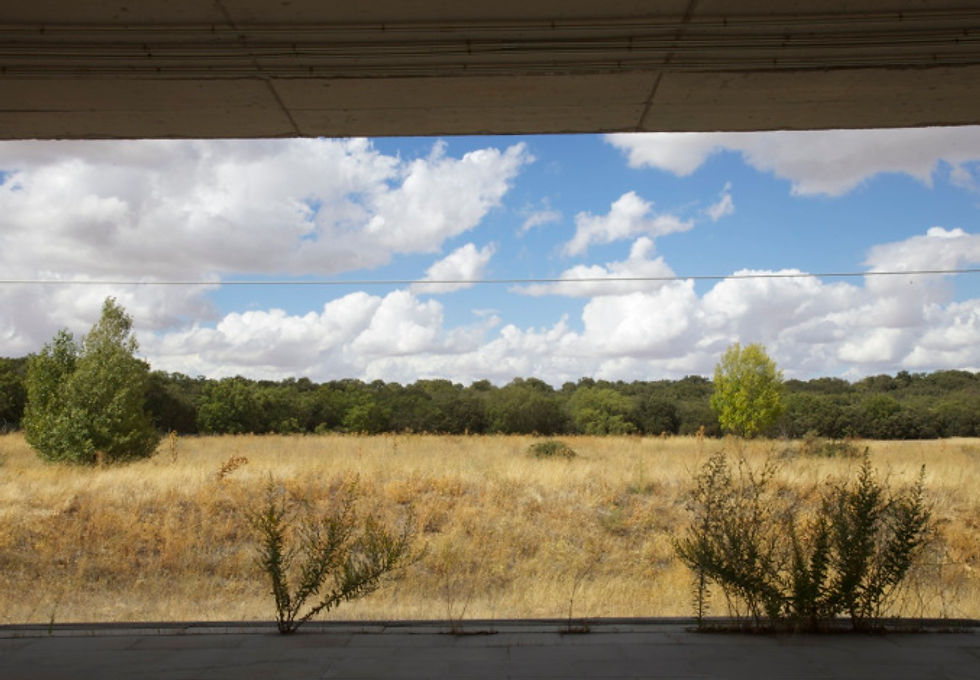
Abandoned platform, Guadalajara-Yebes railway station
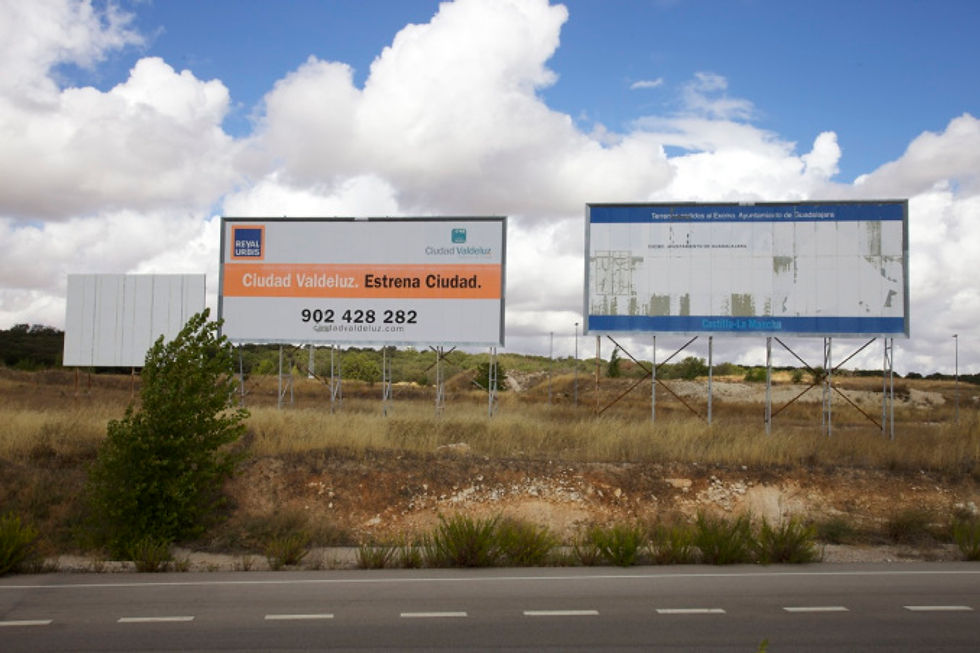
Faded advertising hoardings, Valdeluz
Since the global financial crisis of 2008, these ruins in reverse have become so commonplace and widespread as to comprise a new international ‘style’ of ruination, one that has generated an enormous amount of media commentary, from abandoned infrastructure (like Smithson’s ‘zero’ highway) to entire cities waiting to be inhabited in China. One such site is the commuter town of Valdeluz, 40 miles northeast of Spain’s capital, Madrid, which I visited on a humid September day earlier this year. Conceived at the height of Spain’s economic boom in early 2004, the city (Ciudad) of Valdeluz was laid out next to a vast station on the new high-speed railway that linked Madrid with Barcelona. Nine thousand homes were planned (for an estimated population of 30,000), as well as a large business park, state-of-the-art college, leisure facilities and verdant ‘green zones’ of parks, children’s playgrounds and golf courses. To date, only a quarter of the apartment buildings have been completed, with the population starting in 2008 at only 200 and rising slowly today to around 2,500.
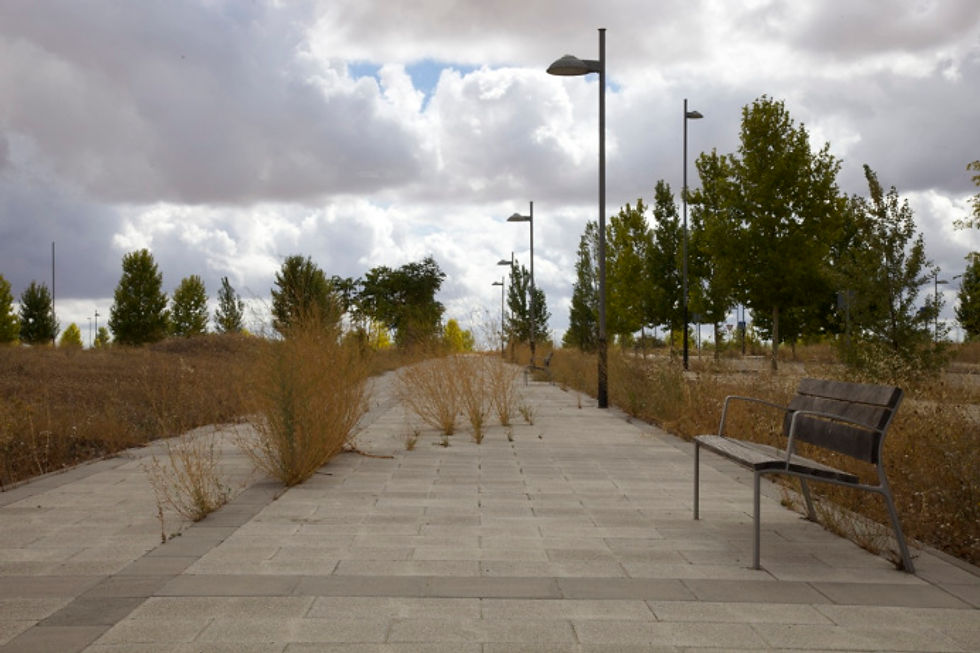
Pedestrian walkway, Valdeluz
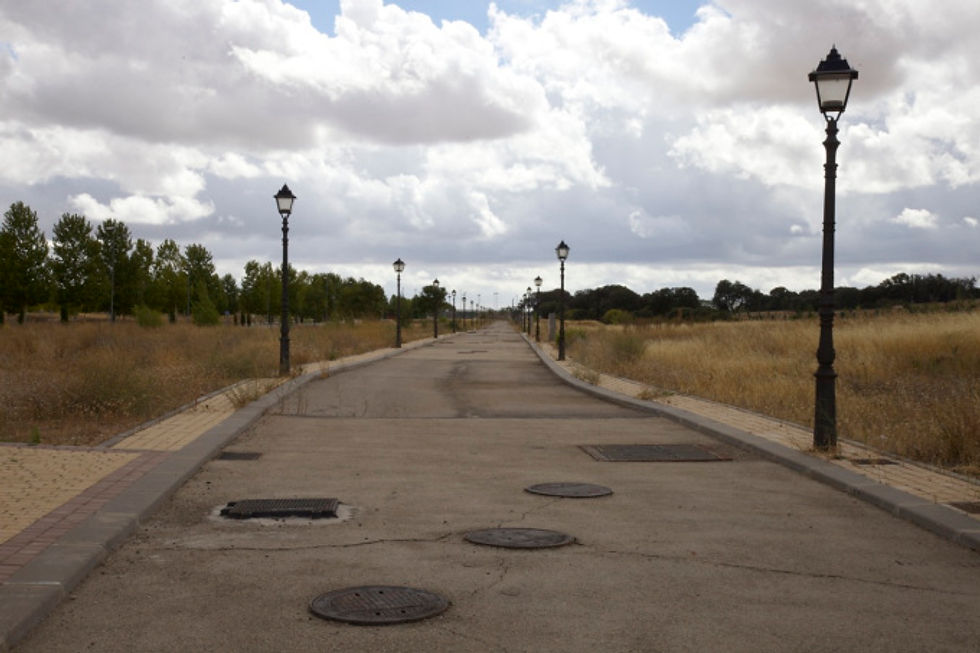
Unfinished road, Valdeluz
Visiting Valdeluz requires detailed knowledge of train timetables: for at least 10 hours every day, no trains at all stop at the station that serves the town, even as dozens hurry through on the high-speed line. As Smithson so clearly articulated, encountering ruins in reverse is akin to being dislocated from conventional notions of time. In Valdeluz, the unmistakeable peace encountered in the ruin is entirely missing; from the abandoned remnants of the town, one cannot construct an image of the built environment as it once was, but, rather, left groping in the dark as to what it was (and is) meant to be. Even though all the objects encountered are familiar to the point of banality (benches, lampposts, manhole covers, pavements, roads, junction boxes), in their unfinished state they seem unreadable, detached as they are from any sense of an assured future use.
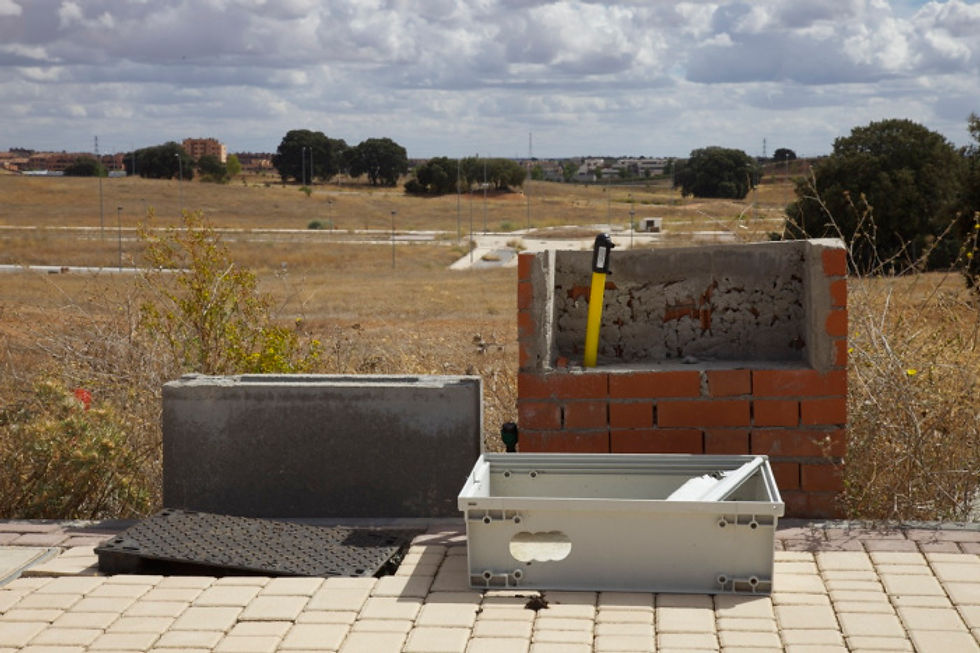
Abandoned junction boxes, Valdeluz
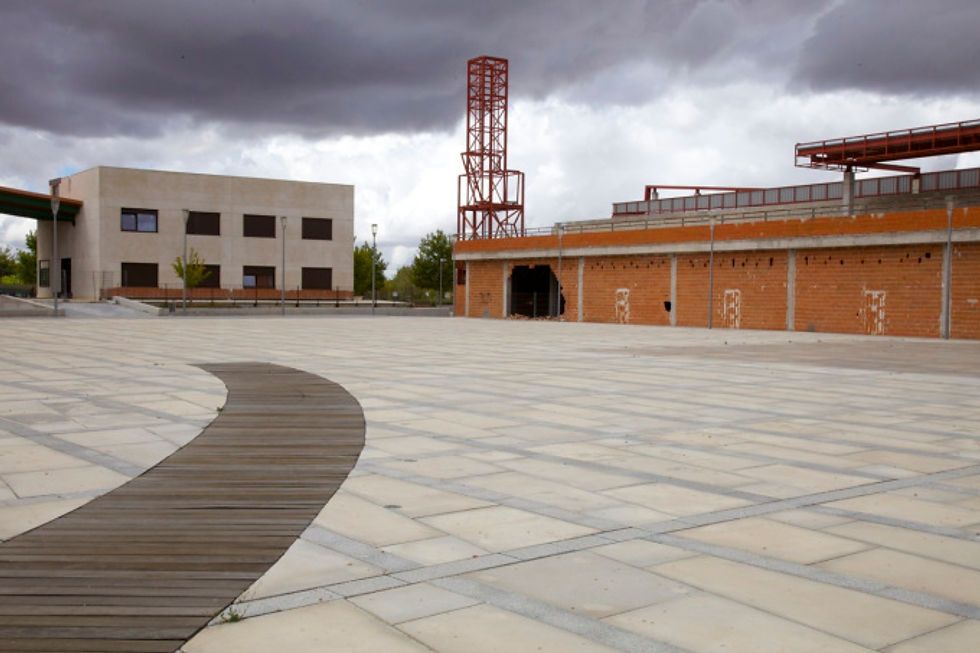
Central plaza, Valdeluz
Even stranger, of course, is the reality of Valdeluz as a place that is lived-in, albeit by only a few. As reported by Newsweek in June 2014, these residents express a common feeling of being cut-off from larger society, forced to deal with unprecedented problems of place-making and social cohesion. As the proprietor of the town’s only café, Yolanda Alvarez, stated, the problems in the town are precisely the opposite of those normally associated with urban life: too much peace-and-quiet, too little to do, virtually no public transport. Even as the town’s mayor has voiced optimism with regard to the future of the fledgling community, so much rests on the larger forces that created the town in the first place (and which have now departed).

Business park, Valdeluz

Business park, Valdeluz
As I hurried back to catch the mid-afternoon train back to Madrid (the last for another 10 hours), the identical clocks spread out on the long empty platform were audible in their rhythmic ticking. Apart from this and the muffled noise of the wind, there was an unearthly sense of stasis, a feeling that generated an entirely new notion of ruin. It was as if a world had been created for the purpose of demonstrating some kind of meaning that nevertheless remained entirely elusive. Had some alien force deposited this built environment onto the earth as a simulation of a human environment? If so, for what purpose? Finding the elusive answers to these questions may yet account for the profoundly alien nature of global capitalism and the increasingly large-scale ruins in reverse it is leaving in its wake.
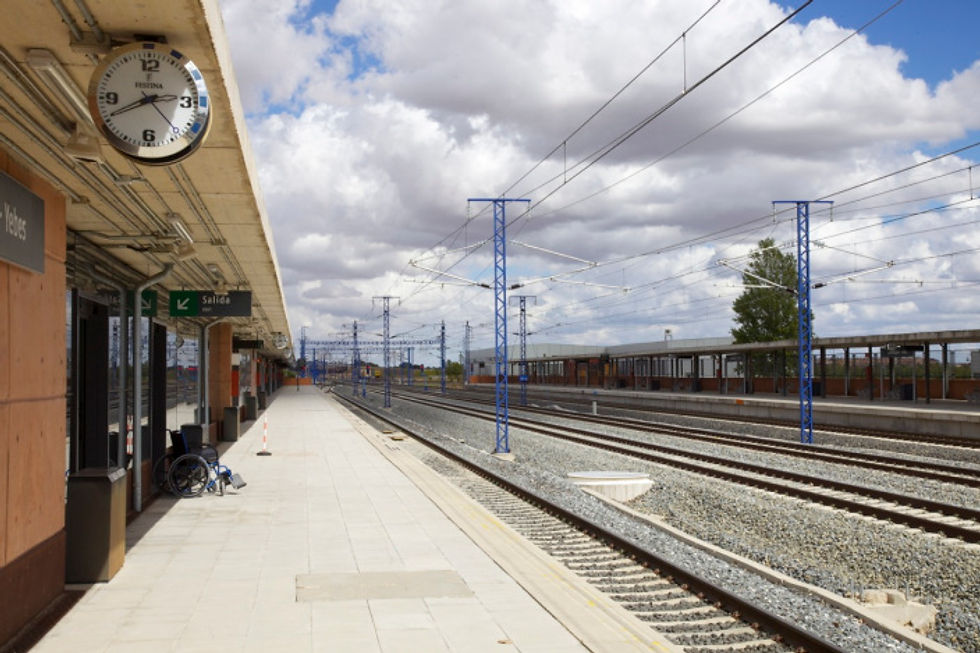
Waiting for the train, Guadalajara-Yebes station.
Comments